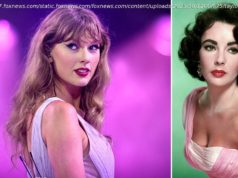When Benny Goodman brought Lionel Hampton and Teddy Wilson into his band he was at the forefront of integrating black musicians into Big Band Swing orchestras.
LOS ANGELES, CALIFORNIA, July 15,2017 – Throughout the first six decades of the last century, film was as highly segregated as most other areas of American society.
During the era of the silent film, African-Americans were often portrayed by white actors in blackface, and the roles were almost always stereotypical, ranging from household servants and other domestics, to bellboys, train porters, and “everyday Joe’s” often afraid of their own shadows.
With the coming of sound, and the immense popularity of black and black-influenced music, on-screen images stated to change, if at first at a snail’s pace.
To the best of my knowledge, the first integrated jazz band to appear on screen is a combo seen briefly in the 1929 RKO feature THE DELIGHTFUL ROGUE.
The small group is white, save that Lionel Hampton, a brilliant African-American musician, is present on drums. I have always assumed that this image was allowed and accepted because the setting is a South Seas island where blacks and whites would probably intermingle quite freely.
Another somewhat striking image is that of two males dancing together. At the time this would not have been seen as a matter of sexual preference, but rather a brief image of two sailors wanting to kick up their heels before heading back to sea, this in a dive where female partners were lacking.
http: //www.jazz-on-film.com/lionelhampton.html#archive
Benny Goodman had been using black arrangers since the birth of his big band in late 1934. Fletcher Henderson, Horace Henderson, Jimmy Mundy, Benny Carter and others were as much responsible for the band’s early success as was the prowess of Benny and his sidemen.
At the urging of John Hammond (and I suspect not much was needed) , Benny brought Teddy Wilson and Lionel Hampton into his organization. Along with drummer Gene Krupa, Wilson and Hampton joined the leader in the Benny Goodman Trio and Quartet.
With little fanfare, and no mention per se of the groundbreaking nature of the event, the integrated quartet appeared in the feature film HOLLYWOOD HOTEL, as well as in an out take used a few years later in a fundraising short.
In the latter half of the 1930s, and into the 1940s, white bandleaders began integrating with more confidence and regularity.
Benny Goodman, always ahead of the swing, hired Charlie Christian, Cootie Williams, Sid Catlett and others. Billie Holiday sang briefly with Artie Shaw, and June Richmond did the same with Jimmy Dorsey.
In the early 1940s, fully one third of Charlie Barnet’s orchestra was black. Some said that Barnet, who was quite wealthy, “could afford to be liberal”; I do not think that was the case.
I knew Charlie, and I had the opportunity to visit him on occasion at his Palm Springs retirement home. During one visit Charlie noted that Duke Ellington’s band was a huge influence on him and his chief arranger, Bill Miller.
Just as Duke had musicians who had their own sounds, Charlie wanted to do the same, and hiring blacks musicians like Howard McGhee, Al Killian, Trummy Young, and Oscar Pettiford allowed him to do just that.
Was he aware of the stance he was taking? Yes, he was aware. Was he warned that leading a mixed band might affect his popularity in some parts of the country? Charlie paused, then replied bluntly, “Fuck the South.”
The film studios were, of course, more sensitive to so-called “public tastes, ” and far less progressive than the bandleaders. When the aforementioned Charlie Barnet band appeared in the 1944 Columbia Pictures feature JAM SESSION, the full orchestra recorded the soundtrack, but when the film was photographed to playback, the black musicians were replaced by whites.
In one sequence we hear a black trumpet player on soundtrack (three of the four trumpets on the band were black, and it is probably Al Killian who takes the solo) , yet we see Paul Cohen miming to the solo on screen.
http: //www.jazz-on-film.com/redskinrhumba.html#archive
This pattern continued well into the 1950s when Universal-International routinely camouflaged the integrated jazz bands of Count Basie, Woody Herman, and others by replacing black musicians with white, or white musicians with black.
Another rather pernicious practice involved editing out performances by black artists when a film was distributed in the South.
Director Arthur Dreifuss explained the practice to me: “When the film was made, all action… anything involving plot … would end before the colored act came on screen, and it would not begin again until the colored performance was over and they were off screen. In that way the appearance could be cut by an editors before the print went south, and the plot would not be affected at all.”
This practice extended into the early days of television, when not only the integration of the screen was deemed unacceptable, but the time saved could be used to sell commercials.
On the other hand, it was television, and not commercial films, that really broke the color barrier as far as performance by integrated jazz bands is concerned.
In 1957, Gerry Mulligan’s quartet, Mulligan and three black sidemen, could appear on the small screen, and nobody commented on anything but the fine music.
But what of so-called reverse integration, that is, the use of white musicians in black bands? Former Goodman arranger and bandleader Fletcher Henderson was the first black bandleader to bring white musicians into his band.
This was during the period of the 1943-44 recording ban (a strike called by the Musician’s Union to change the system of royalties paid on record use) , so our knowledge of the band’s music, a jazz orchestra that included three or four white musicians, is limited to some broadcasts and armed forces transcriptions.
In the 1950s and 1960s, Duke Ellington would famously hire Louis Belson, and Count Basie, Gerald Wilson, Benny Carter and others always featured white musicians.
It has been suggested that part of Fletcher Henderson’s motivation to integrate was based on the draft, and the difficulty of finding replacements for musicians who had been called into service. That may or may not be the case, and nothing in print suggests one thing or another.
In 1946 Lucky Millinder, a successful and popular Harlem bandleader, took a quite conscious and courageous step. A successful bandleader for a decade, Lucky decided to integrate his orchestra. The Pittsburgh Courier later reviewed this move, and Millinder’s motivations were quite clear:
“Early last year, the colorful Millinder…added the first non-Negro member to his organization, in an extensive rebuilding move…. He felt the time had come to ‘do away with the jim crow attitude of Negroes as well as whites.’ ”
“Before his rebuilding program was over, he had literally put together an ‘all nations” crew’ with an Italian, an Armenian, an Irishman, a Jew, an East Indian, along with a number of Negroes.






